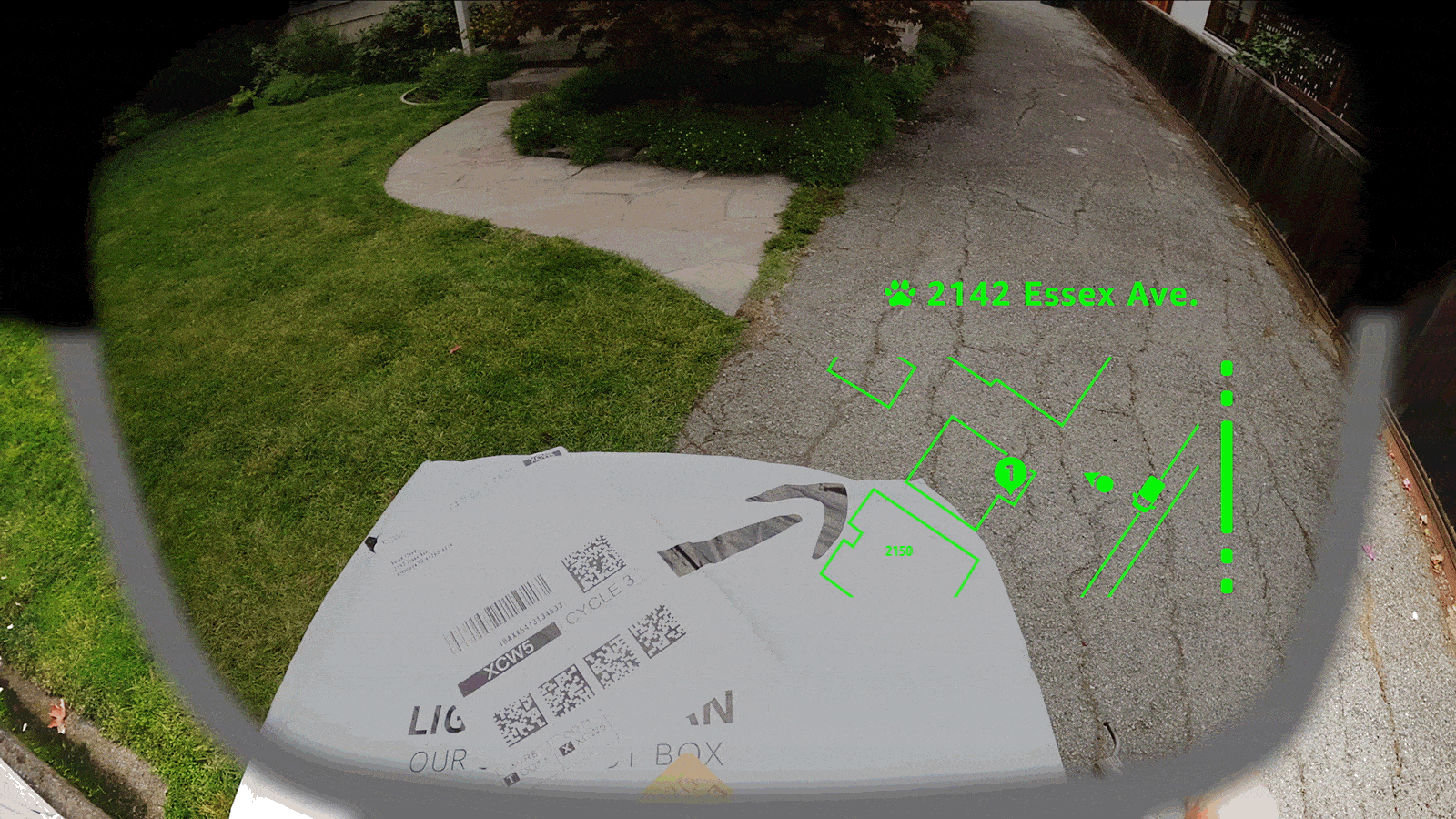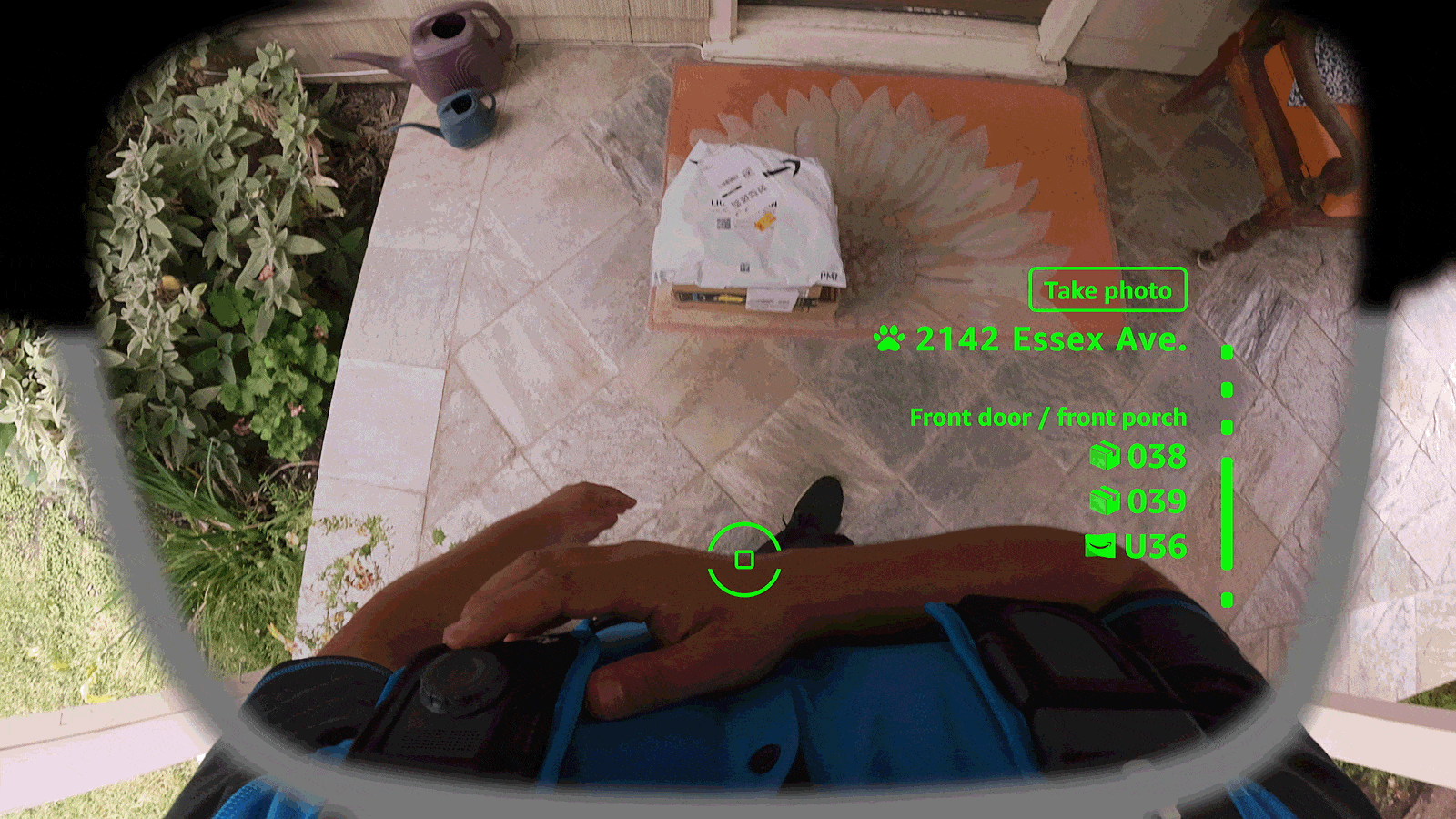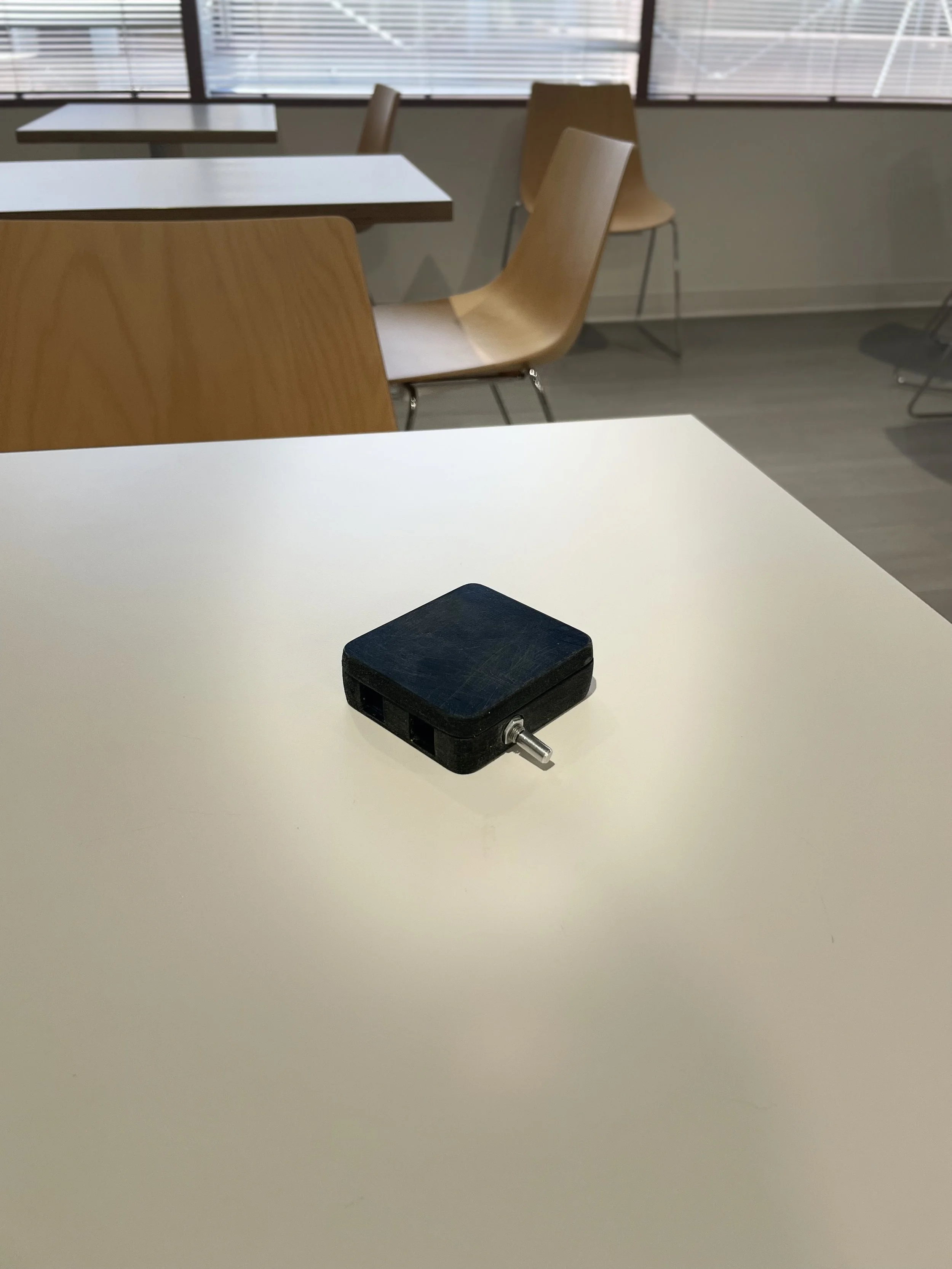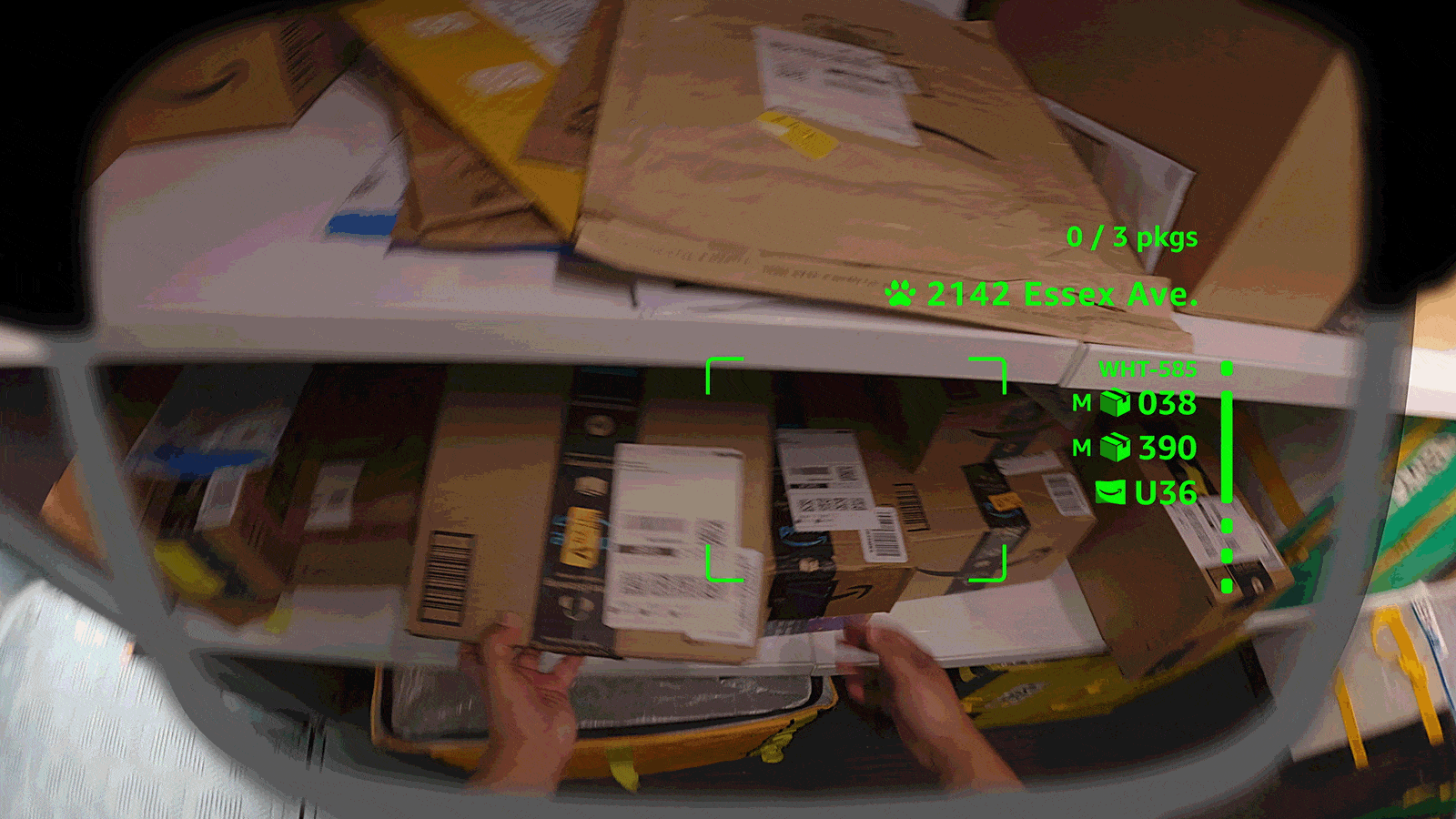Amazon Smart Delivery Glasses - Input Device
Overview
Amazon’s Smart Delivery Glasses allow drivers to navigate routes, scan packages, and receive on‑property safety alerts—without pulling out a phone. The glasses are lightweight, fit securely, and keep the wearer’s attention on the task and environment. Verge’s article on Amazon Smart Delivery Glasses.
As Design Technologist & UX Engineer, I was the DRI for the input mechanism: defining the interaction model, building hardware prototypes, running UXR, and engineering the green‑monochrome UI system.
Challenge
Create an input that’s as fast as a phone, works with gloves in rain/noise/motion, and never fails in “performance mode.” Voice, gesture, and temple touch were ruled out for reliability and speed. The answer had to be tactile, glance‑free, and robust.
Constraints
- Must be faster than phone workflows
- Operable offline & in extreme conditions
- Eyes‑free, glove‑compatible
- Single‑color (green) display hierarchy
Rapid Form Study
Cardboard + foam mockups established size, angle, and hand feel before electronics—surfacing accidental‑press risks when carrying boxes.
Defining the Input Paradigm
Temple touch made users hunt for hotspots; voice failed in outdoor noise and across accents. I proposed a separate tactile puck controller to keep interaction reliable and eyes‑free.
Hardware Prototyping
I built five controllers:
Side Scroller, Joystick, Rotational Dial, Linear Up‑Down‑Select, and D‑Pad—to evaluate speed, accuracy, and muscle memory under UXR.
FOV Calibration (Magic Leap)
I built a calibration tool to align gaze and pentascopic tilt, render text at preset offsets, and let users choose their most comfortable FOV while walking. Results guided waveguide placement for production.
User Interface Design Prototyping
This shows the different fonts that were tested for best UI comprehension. The final set includes sans-serif fonts known for their clean and simple design, enhancing quick comprehension and reducing user fatigue during interaction.
Impact
~2 seconds saved per delivery vs. phone
Validated tactile input architecture for Amazon AR wearables
Safety‑first: peripheral, glanceable UI reduces distraction
Established tactile interaction guidelines for future devices
Reflection
Designing input for smart glasses is designing for trust—between human reflex and machine response. As a Design Technologist, I used prototyping to collapse ambiguity. As a UX Engineer, I translated human factors into an interface that works at speed, in motion, and in the real world.




















